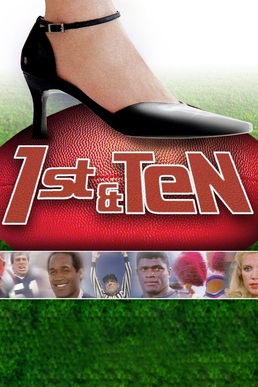Welcome to Late Night Retro Television Reviews, a feature where we review some of our favorite and least favorite shows of the past! On Wednesdays, I will be reviewing 1st and Ten, which aired in syndication from 1984 to 1991. The entire series is streaming on Tubi.

This week, the Bulls face a dilemma. What to do with O.J. Simpson?
Episode 2.2 “The Veterans”
(Dir by Bruce Seth Green, originally aired on September 1st, 1986)
This week, veteran running back T.D. Parker (O.J. Simpson) shows up for training camp. All of the players are excited to see him. At the bar where all of the Bulls hang out, Dr. Death (Donald Gibb) announces that T.D. Parker has had over one hundred injuries over the past twelve years but he’s still the heart and the soul of the Bulls franchise. He’s the face of the team! When people think of the Los Angeles Bulls, they think of T.D. Parker slashing through the other team on his way to an acquittal touchdown.
Speaking as a viewer, it seems kind of strange that this is the first that I’m really hearing about the legendary T.D. Parker. Where was he last season? The Bulls went all the way to the Championship Game but I never once heard anyone mention T.D. Parker. I certainly didn’t see him in the locker room. The Bulls actually had a totally different running back named Carl Witherspoon. Oddly, Carl seems to have vanished this season….
As for T.D., his injuries are catching up with him. Denardo and Diana are forced to confront that fact that T.D. can no longer cut it. Even in practice, he’s spilling a lot of blood on the field. Denardo cuts T.D. from the team. When T.D. says that football is all that he knows, Denardo announces that T.D. may not be playing but he’ll still be on the field …. AS A COACH! T.D. looks confused. He’ll figure it out eventually, I guess.
Meanwhile, Jeff East briefly returns as quarterback Bryce Smith but just long enough to fall out of a window at training camp and bust his knee. (He was trying to keep the new kicker — a Bosnian played by future voice of the Crypt Keeper John Kassir — from sneaking out to go into town to get drunk.) Bryce is done for the season. Veteran quarterback and all-around druggie sleaze Johnny Valentine (Sam J. Jones) becomes the new starter and Tom Yinessa is brought back to be his backup. That’ll make Yinessa’s roommate (Jeff Kaake) and Yinessa’s potential girlfriend (Katherine Kelly Lang) happy.
Finally, the NFL owners don’t want to give their players a pension or a raise. They do, however, want to give them mandatory drug tests. Diana protests but she’s overruled by the other owners, all of whom are male and in their 60s. There’s a lot of toupees and cigars at the ownership meeting.
This episode was actually kind of entertaining. That’s doesn’t mean it was good. 1st & Ten isn’t a really a show that’s ever good. But this episode did feature Sam J. Jones giving a totally over the top performance as creepy quarterback Johnny Valentine. Speaking of going over the top, the same can be said of Delta Burke’s performance this season. It would appear that between seasons one and two, Burke realized there was no need to try to be in any way subtle in her line readings. That was probably the right decision.
Next week …. who knows? I’m getting a little bored with training camp so hopefully, we’ll move on!

